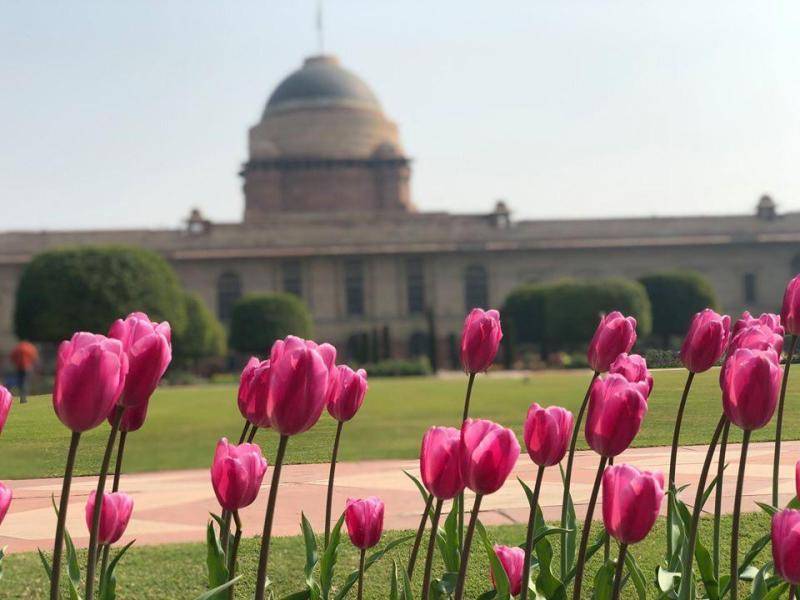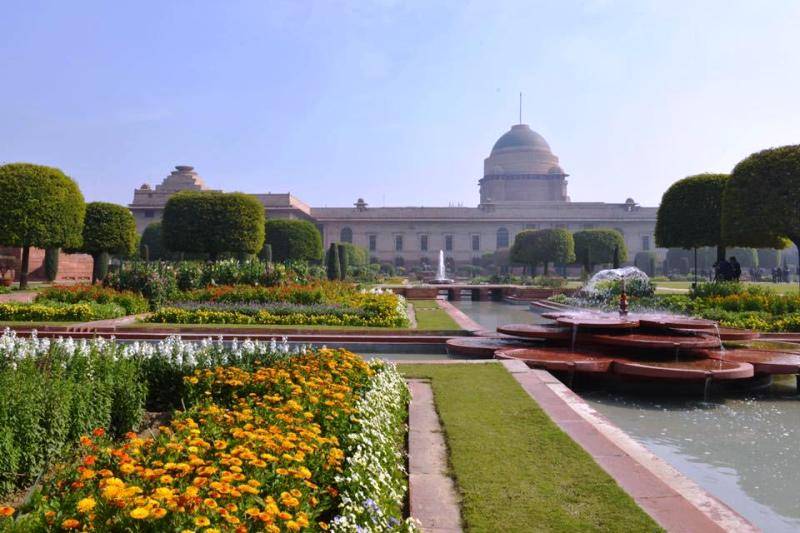
The Annual Udyanotsav of the Mughal gardens of Rashtrapathi Bhavan was inaugurated by President Ramnath Kovind. The Mughal Gardens will be open for the public from February 5 to March 8, 2020 between 1000 hours and 1600 hours. The Mughal Gardens is spread over 15 acres is the soul of the Presidential Palace. Mughal Gardens of Jammu and Kashmir, the gardens around the Taj Mahal and even miniature paintings of India and Persia have been influencers.
Sir Edwin Lutyens designed the Mughal Gardens as early as 1917, but it was in 1928-1929 that plantings were done. The collaborator for the gardens was the then Director of Horticulture William Mustoe. The Mughal and the English style were blended effortlessly in Lutyen’s designs. A seamless blend of Mughal canals, terraces and flowering shrubs along with the European flowerbeds, lawns and private hedges.
Tulips to a variety of 159 Roses namely Adora, Mrinalini, Taj Mahal, Eiffel Tower, Modern Art, Scentimental, Oklahoma (also called black rose), Belami, Black Lady, Paradise, Blue Moon and Lady X. Some varieties named after people of national and international fame such as Mother Teresa, Raja Ram Mohan Roy, Mr. Lincoln, John F. Kennedy, Jawahar, Queen Elizabeth, and Christian Dior amongst others. Arjun and Bhim, from the Mahabharata, also find place in the presidential palace.

Asiatic Lilies, Daffodils, hyacinths, and other seasonal flowers like Daisy, Pansy, etc are also seen. There are around 60-101 varieties of Bougainvillea. Doob grass, which grows there in Kolkata, was brought in. The garden has almost 50 varieties of trees, shrubs, and vines. At present over three hundred permanent and casual employees are deployed for the development and maintenance of the gardens of Rashtrapati Bhavan. The fountains playing continually add to the charm of the spaces and the beauty of the garden is beyond words.
We learn from records that C. Rajagopalachari, who was the first Indian resident of Rashtrapati Bhavan, a small portion of the garden used to cultivate wheat, as a gesture to address the problem of shortage of food in the country. President Kalam effectively contributed to growing Herbal Gardens, Tactile Gardens for the visually handicapped, Musical gardens, Bio-Fuel Park, Spiritual, and Nutrition garden, and more.
Pratibha Patil contributed by making The Bonsai Garden and nature trails in Rashtrapati Bhavan along with Project Roshini which aimed at making the President’s House an environment-friendly habitat by efficient use of resources and use of renewable energy sources. Rainwater harvesting for recharging groundwater in the presidential estate was done by President K.R. Narayanan in collaboration with the Centre for Science and Environment.
Mughal Gardens of Rashtrapati Bhavan that has been designed as three successive terraces. First is the Rectangular Garden, followed by Long Garden, and finally the Circular Garden. The visit could also be booked online.
















